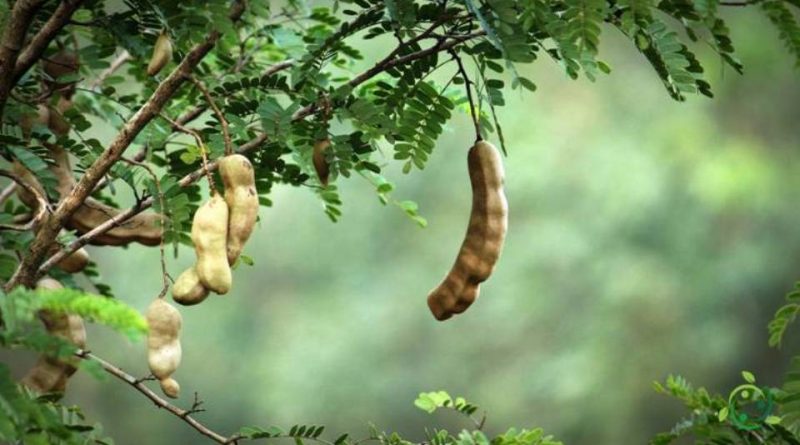How Tamarind is grown
How Tamarind is grown
The tamarind (Tamarindus indica L., 1753) is a tropical fruit tree of the Fabaceae family, native to East Africa and India.
This plant is grown in many tropical areas of Asia and Latin America.
Tamarind is a tree that produces large pendulous legumes with sweet pulp,
The Tamarind is a very slow growing evergreen tree but on the other hand very long-lived in fact its vegetative cycle lasts at least 150 years.
Tamarind cultivation –
The tamarind, like many tropical plants, to be cultivated needs full sun exposure for many hours of the day and as much as possible protected from strong winds.
This plant fears too low temperatures and late frosts; it can suffer from humidity especially if accompanied by cold temperatures and, moreover, in regions with a mild winter climate it can be subject to some problems only in the first years of growth, even if well sheltered it can resist without severe suffering. However, it is a plant that develops well even in coastal areas and therefore on saline soil.
Pedological needs –
The tamarind is a rather rustic tree from the point of view of soil needs but which develops very well in very deep soils, including clayey, but possibly sandy, even saline and with neutral pH and above all well drained. If, on the other hand, this plant is grown in too compact soil, its root system could die from asphyxiation or from the onset of rot.
Water needs –
Young Tamarindus indica plants need regular watering until their roots have penetrated deeply.
Mature plants, on the other hand, are generally satisfied with the meteoric contributions and therefore irrigation should be carried out only if the drought periods are very prolonged over time and without ever exceeding to avoid that any water stagnation in the soil could be the primary cause of its deterioration and his poor health.
Irrigation must therefore be a rescue practice only in particular dry periods.
Nutritional needs –
Tamarind is a plant that benefits from balanced soil fertility, which is why fertilization must be done in early spring with a well-mature and balanced organic fertilizer. Additions of chemical fertilizers are to be avoided especially if made with nitrogen fertilizers that push the plant towards the vegetation to the detriment of production and that can predispose it to parasitic attacks.
Propagation –
Tamarind is a plant that propagates by seed. To favor germination and therefore the production of new plants to grow, the seeds must be scarified to remove the integument that covers them and then immediately soaked in hot water for 24 hours, before sowing. Another technique that can be adopted, if scarification is difficult, is to boil the seeds for a few minutes to greatly favor their germination capacity.
The sowing must be carried out in narrow and tall pots, filled for 3/4 of their height with specific substrate or better with coconut fiber. It is necessary to place the seeds on the substrate and then cover them with the addition of other soil that must be compacted sufficiently.
At this point the pots should be placed in a warm place, preferably not exposed to light until germination; depending on the conditions of temperature (especially of the soil) and humidity, the germination time can fluctuate between 2 and 8 weeks.
Once the seed has germinated and the taproot is well formed, the pots are moved to a bright area, away from direct sunlight for at least 15-20 days. During this period, care must be taken to keep the substrate of the plant constantly humid but free from water stagnation. After the second month of life, a first fertilization is carried out to provide the first nutrients essential for the growth of the tamarind.
Only when the plant is robust enough is it repotted in a larger container and reared for at least 2-3 years before final planting.
Tamarind plant –
The tamarind should possibly be planted in soils that, due to their characteristics, have minimal resistance to root deepening, therefore loose, permeable, very porous soils that are at the same time well endowed with organic substance.
The plant can be transplanted at different times depending on the climatic conditions: after the first year in regions with a mild winter climate after two years in those with more rigid climates.
The fruits are harvested when fully ripe and generally a well-developed and vigorous Tamarind plant produces up to 200 kg of fruit per year.
Pruning technique –
Tamarind is a plant that can only be pruned to eliminate unproductive branches, therefore dry or too old ones. If necessary, those affected by fungal diseases must be cut and for this operation the shears must be disinfected often using bleach or sterilizing them over a flame. Pruning also serves to facilitate fruit harvesting.
Final tips –
Tamarind is a very robust plant that benefits from cultivation in the most natural conditions possible, that is, without the addition of synthetic fertilizers and possibly adopting vegetable mulching and non-cultivation of the soil. In these conditions, parasitic attacks and fungal diseases are also reduced below the intervention threshold.

